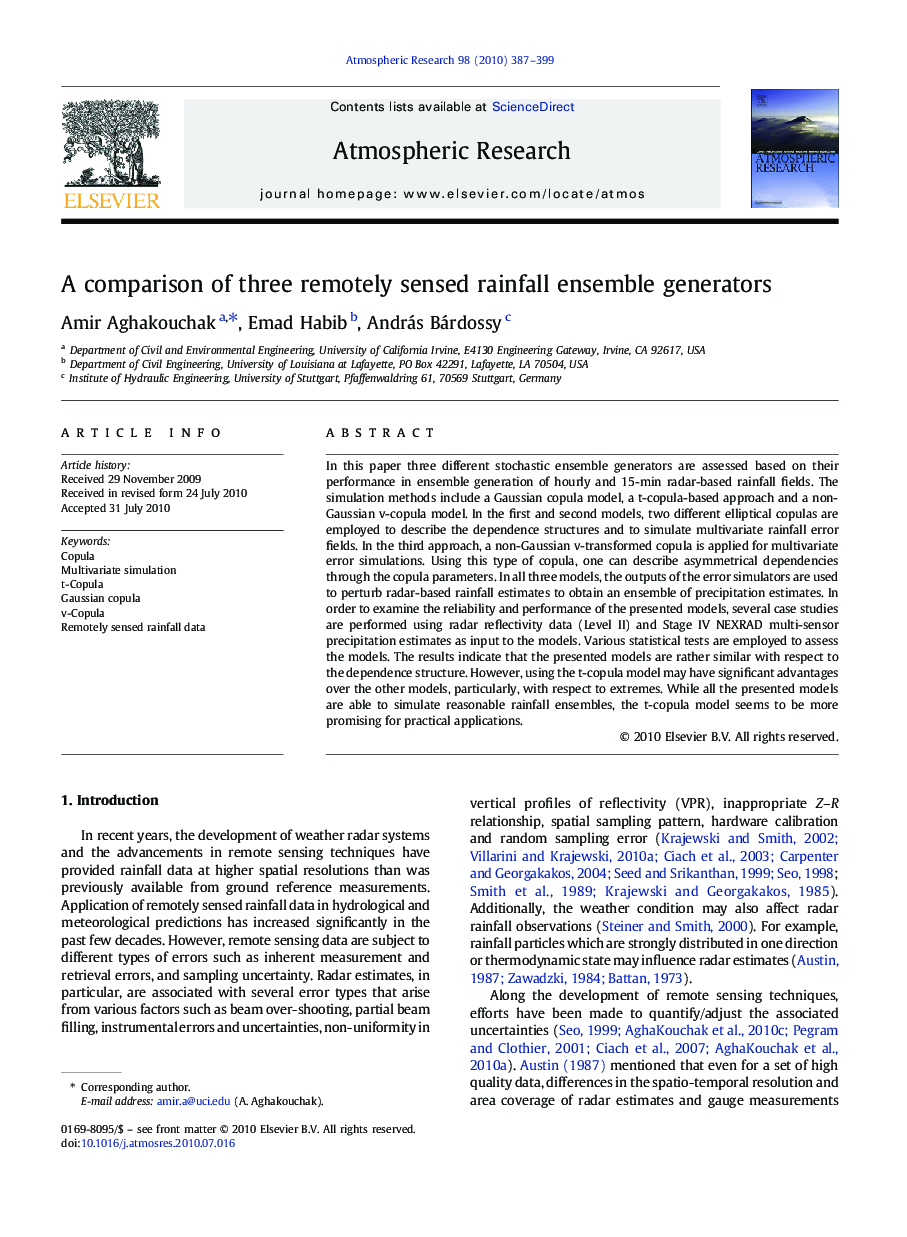| Article ID | Journal | Published Year | Pages | File Type |
|---|---|---|---|---|
| 6344187 | Atmospheric Research | 2010 | 13 Pages |
In this paper three different stochastic ensemble generators are assessed based on their performance in ensemble generation of hourly and 15-min radar-based rainfall fields. The simulation methods include a Gaussian copula model, a t-copula-based approach and a non-Gaussian v-copula model. In the first and second models, two different elliptical copulas are employed to describe the dependence structures and to simulate multivariate rainfall error fields. In the third approach, a non-Gaussian v-transformed copula is applied for multivariate error simulations. Using this type of copula, one can describe asymmetrical dependencies through the copula parameters. In all three models, the outputs of the error simulators are used to perturb radar-based rainfall estimates to obtain an ensemble of precipitation estimates. In order to examine the reliability and performance of the presented models, several case studies are performed using radar reflectivity data (Level II) and Stage IV NEXRAD multi-sensor precipitation estimates as input to the models. Various statistical tests are employed to assess the models. The results indicate that the presented models are rather similar with respect to the dependence structure. However, using the t-copula model may have significant advantages over the other models, particularly, with respect to extremes. While all the presented models are able to simulate reasonable rainfall ensembles, the t-copula model seems to be more promising for practical applications.
